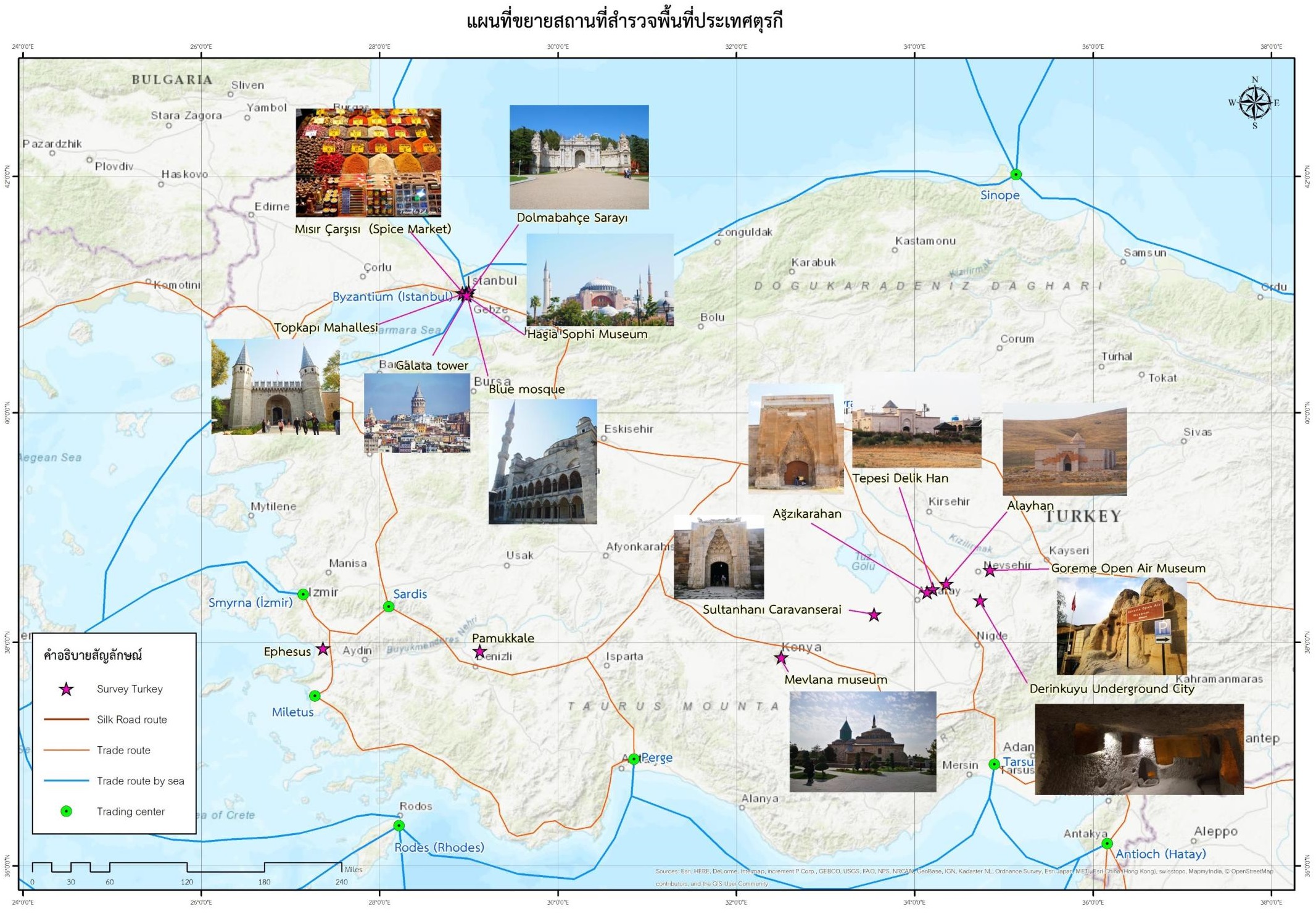(Chapter 1) From ancient Silk Road to Prosperity of Suvarnabhumi in Turkey

Connection of ancient silk road in Turkey (Izmir to Istanbul) (Izmir)
Evidences from field survey in China shown commercial relationship between East and West countries for thousands of years, as demonstrated in trading on Silk Road and Maritime Silk Road. Major city of ancient Western commerce is Anatolia Peninsula (also known as Asia Minor) which is the main area of Turkey, the border of Asia and Europe. To ensure connection of findings between ancient commercial route and prosperity of Suvarnabhumi, researchers include Turkey in research target as following details;
Izmir is the location of Ephesus, ancient city that served as port and administration center in Greek and Roman era for 2,500 years or 1,000 B.C., plain area adjacent to Aegean Sea, prime location for battle and commerce.
By surveying Ephesus, this ancient city shows complete structure of main architecture such as Gothic pillar, earth pipe irrigation system, Amphitheatre, and traditional library. The library is well known for great maintenance of books and aesthetic Hellanistic art. These evidences illustrate flourish state of ancient cities.
Apart from administration and commerce, Ephesus serves as Christian city. During Ottoman Empire, religion of this city shifted from Christianity to Islam as evidenced by change from Hagia Sophia Church to Mosque, in which all Christian symbols are replaced. However, such symbols are then peeled off and publicly known as the major place of 2 religions. The government has changed this place to religious museum to avoid conflicts of 2 religions.
One of Islamic sites built during successful Ottoman Empire is Blue Mosque, which is inspired by motivation to beat Saint Sophia, the largest cathedral at that time. This Mosque is currently main prayer hall of Istanbul citizens.
Based on such religious change, researchers found main Christianity sites of Ottoman period in Goreme Open Air Museum which is the tunnel under mountain used as shelter to conceal propagation of Christianity. Researchers have found 3 Christian churches at Cappadocia City, with Christian cross, paintings of Christian rituals, and underground shelter. Presently, the area is Underground City of Derinkuyu or Kaymakli which is museum under 85-meter hole. This 10-storey hole is used as shelter of Cappadocia people during war which Eastern Arabian and Western Roman are likely to invade the area for commercial purposes and interrupt propagation of Christianity in this area.
(To be Continue)

